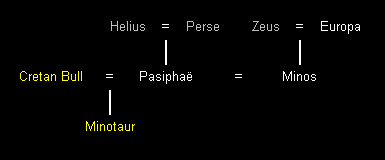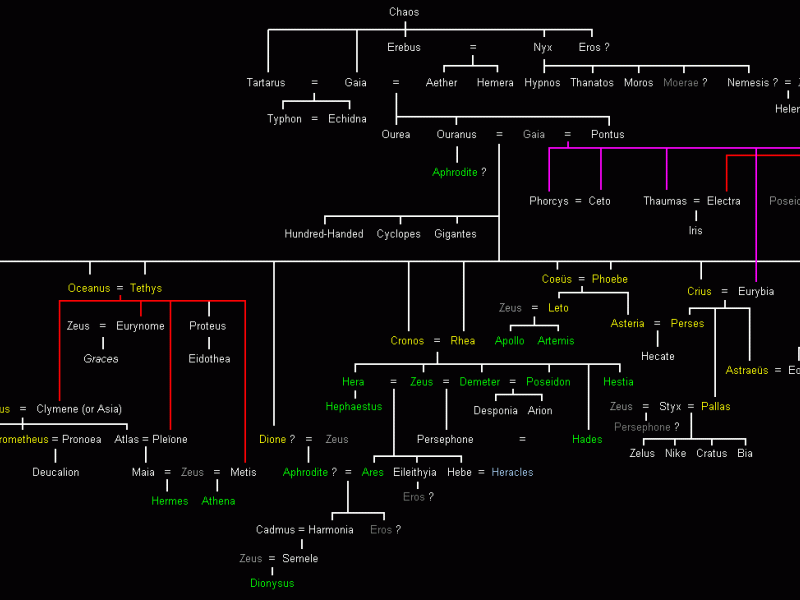Giants and Monsters
The genealogy above displays most of the principal monsters that are found in classical mythology. Most of the monsters were children of Typhon and Echidna, and of Phorcys and Ceto.
Please note that Echidna was sometimes seen as the offspring of Gaea and Tartarus, and therefore the sister of the monster of the Typhon. Other writers said that she was the daughter of the sea god Phorcys and the sea monster Ceto.
The six-headed monster Scylla is not listed in this genealogy, mainly because of the confusion of who her parents were. Some said that Scylla was a daughter of Typhon and Echidna, while others said she was a daughter of Phorcys and Ceto, or that her mother was Crataeïs, Hecate or Lamia. Scylla was originally a maiden or nymph who was transformed into a monster by the jealous sorceress Circe.
I could not fully display the children of Gaea and Ouranos (Uranus), who were known as the Gigantes or Giants, in the above tree, because there were 24 giants. So below, you will find another family tree containing most of the Gigantes. The Gigantes were born from Ouranos' blood from his genitals that landed on the Earth (Gaea or Ge).
These giants fought against the gods, known as the Gigantomachy (War of the Giants). The gods were aided by the hero Heracles, who killed most of the Gigantes.
Notice that not all of the names of the giants are given below.
Giants
I haven't included all of the monsters in the first family tree, mainly because they didn't fit in the genealogy, and one of them is the Minotaur from Crete. The Minotaur was the offspring of the Cretan Bull and Pasiphaë, wife of King Minos of Crete. The hero Theseus eventually killed the Minotaur. You will find a more detailed genealogy for Europa and Minos in the House of Crete.
By Jimmy Joe








